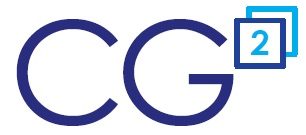If you're like most people, you don’t have any time to work on nice-to-have projects. On the surface, documenting TPM workflow seems like busy-work that a manager might assign just to keep the department busy during a slow period. However, there are several important reasons every CPG company should document their TPM workflow:
Use it to minimize transition issues when key employees leave: Financial accounting of trade promotions can be complex. Trade promotions can affect almost every department in a CG company, including sales, marketing, finance, accounts receivable, accounts payable, marketing research, demand planning, and your information technology team. It can also affect third parties, such as your broker partners.
Trade promotion management is part science and part art-form. Over many years, many CG companies find themselves in a situation where there is only one key person that understands the entire TPM workflow in detail, from start to finish. If your TPM workflow isn’t documented, you risk disruptions if this key person leaves or is unexpectedly unable to work. You also limit your organization’s growth potential by not enabling TPM in your company to be a scaleable, repeatable process. For all of these reasons and more, documenting your TPM workflows is like an TPM insurance policy. Bad things may happen, but at least you’ll be in a better position to to pick up the pieces if you have everything documented.
An acquiring company may request documentation: If your company is an acquisition candidate, you can be pro-active and document your TPM workflows. Trade promotion spending is typically the second largest item on a CG brand’s P&L. How you mange (or fail to manage) your second largest expense can be material to the acquisition. Activities around mergers and acquisitions often have compressed timelines, where all the requested information is needed yesterday. Save yourself the stress, and have your TPM workflows documented before you’re asked to document it.
Analyze workflow to identify inefficiencies: In math or calculus class, did you ever find it easier to solve the problem when you wrote out the formula or made a diagram? For many of us, we need to ‘see’ a picture of what’s happening to better understand it. The same is often true of trade promotion workflow. Your documentation can help your staff visualize the entire TPM workflow. The activity of collecting the information and writing the documents often highlights duplicated efforts, complexity, and other tasks that you may be inspired to fix.
Documentation may be required for SSAE-16 audits and opinions: Sarbanes-Oxley, FASB and other governmental regulations may apply to your trade promotion management processes. Even if you are a private company, you should still strive to comply with these types of regulations. You may someday be acquired by a public company.
Save time on a TPM solution implementation: If you don’t already have a TPM solution, you should. One of the first activities of any TPM solution vendor will be to identify the gaps between your current TPM process and those of the TPM solution. You will save a lot of time and cost in your implementation phase if you already have your current workflow processes documented.
Alex Ring
President
CG Squared, Inc.
